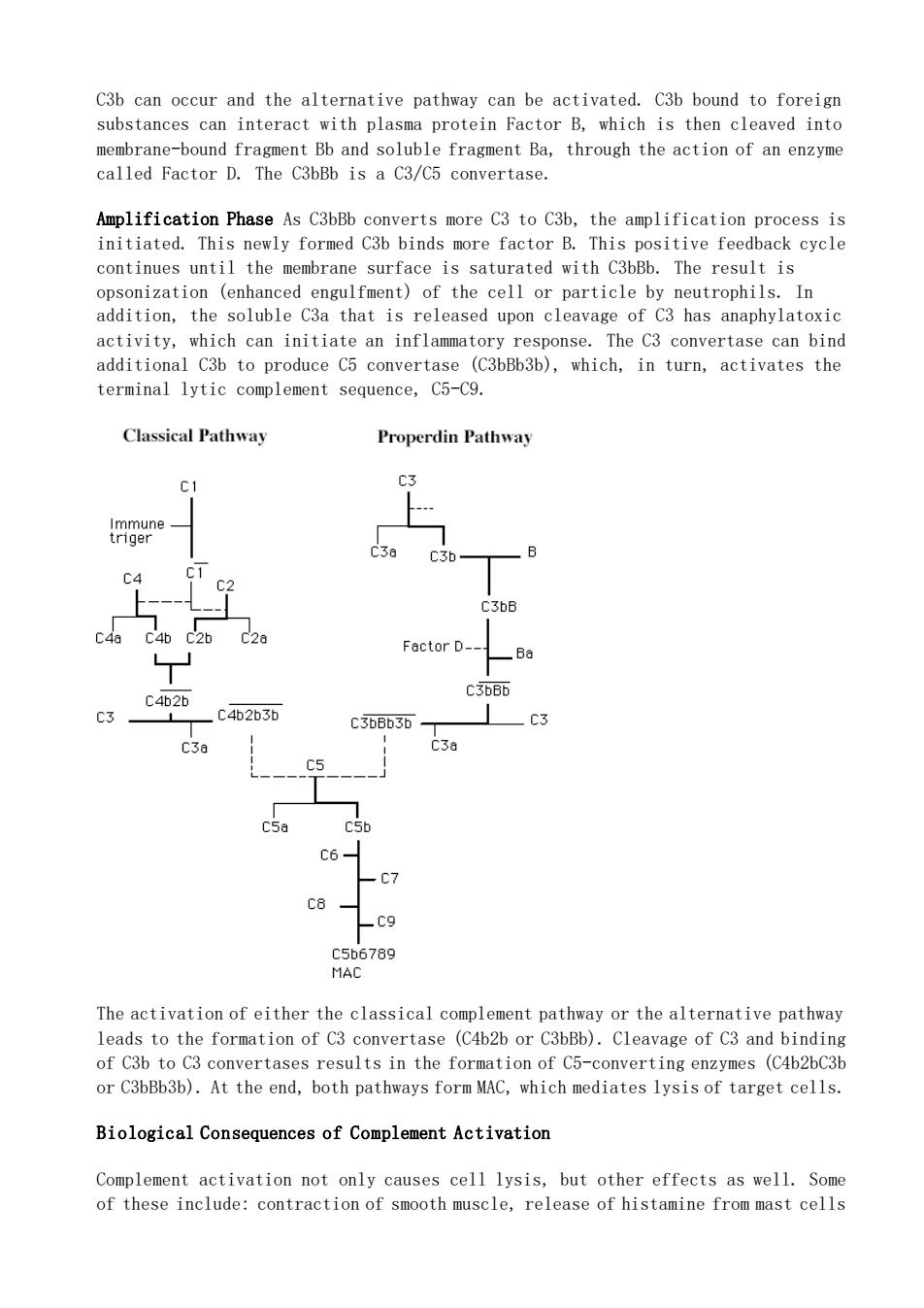正在加载图片...

C3b can occur and the alternative pathway can be activated.C3b bound to foreign substances can interact with plasma protein Factor B,which is then cleaved into membrane-bound fragment Bb and soluble fragment Ba,through the action of an enzyme called Factor D.The C3bBb is a C3/C5 convertase. Amplification Phase As C3bBb converts more C3 to C3b,the amplification process is initiated.This newly formed C3b binds more factor B.This positive feedback cycle continues until the membrane surface is saturated with C3bBb.The result is opsonization (enhanced engulfment)of the cell or particle by neutrophils.In addition,the soluble C3a that is released upon cleavage of C3 has anaphylatoxic activity,which can initiate an inflammatory response.The C3 convertase can bind additional C3b to produce C5 convertase (C3bBb3b),which,in turn,activates the terminal lytic complement sequence,C5-C9. Classical Pathway Properdin Pathway C3 rm0ene C3e C4 Factor D-- Ba C4b2b C3bB6 C3 c42b30 C3bBb3b- c3 C3a C3a C6- -C7 _C9 a789 The activation of either the classical complement pathway or the alternative pathway leads to the formation of C3 convertase (Cb)Cleavage ofand bindin of C3b to C3 convertases results in the formation of C5-converting enzymes (C4b2bC3b or C3bBb3b).At the end,both pathways form MAC.which mediates lvsis of target cells. Biological Consequences of Complement Activation Complement activation not only causes cell lysis,but other effects as well.Some of these include: contraction of smooth muscle,release of histamine from mast cells C3b can occur and the alternative pathway can be activated. C3b bound to foreign substances can interact with plasma protein Factor B, which is then cleaved into membrane-bound fragment Bb and soluble fragment Ba, through the action of an enzyme called Factor D. The C3bBb is a C3/C5 convertase. Amplification Phase As C3bBb converts more C3 to C3b, the amplification process is initiated. This newly formed C3b binds more factor B. This positive feedback cycle continues until the membrane surface is saturated with C3bBb. The result is opsonization (enhanced engulfment) of the cell or particle by neutrophils. In addition, the soluble C3a that is released upon cleavage of C3 has anaphylatoxic activity, which can initiate an inflammatory response. The C3 convertase can bind additional C3b to produce C5 convertase (C3bBb3b), which, in turn, activates the terminal lytic complement sequence, C5-C9. The activation of either the classical complement pathway or the alternative pathway leads to the formation of C3 convertase (C4b2b or C3bBb). Cleavage of C3 and binding of C3b to C3 convertases results in the formation of C5-converting enzymes (C4b2bC3b or C3bBb3b). At the end, both pathways form MAC, which mediates lysis of target cells. Biological Consequences of Complement Activation Complement activation not only causes cell lysis, but other effects as well. Some of these include: contraction of smooth muscle, release of histamine from mast cells